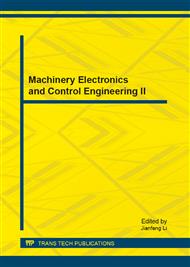p.1008
p.1012
p.1017
p.1021
p.1025
p.1030
p.1034
p.1038
p.1042
Optimized Design of Induction Cooker by Numerical Computation and Experimental Investigation
Abstract:
Optimized design of litz-wire inductor and optimal choose of working frequency is required to improve the efficiency of induction cooker. A new formula to calculate the dynamic inductance is deduced from the basic definition of the inductance, considering the case that the pot may be lifted with the inductor in working state. A method to calculate the loss of the inductor and to achieve the optimized the diameter of the litz wire by numerical calculation is presented. Take advantage of the calculation results, the resonant frequency for the induction heating system can be determined. An experimental prototype was built to verify the calculation method.
Info:
Periodical:
Pages:
1025-1029
Citation:
Online since:
March 2013
Authors:
Price:
Сopyright:
© 2013 Trans Tech Publications Ltd. All Rights Reserved
Share:
Citation:


